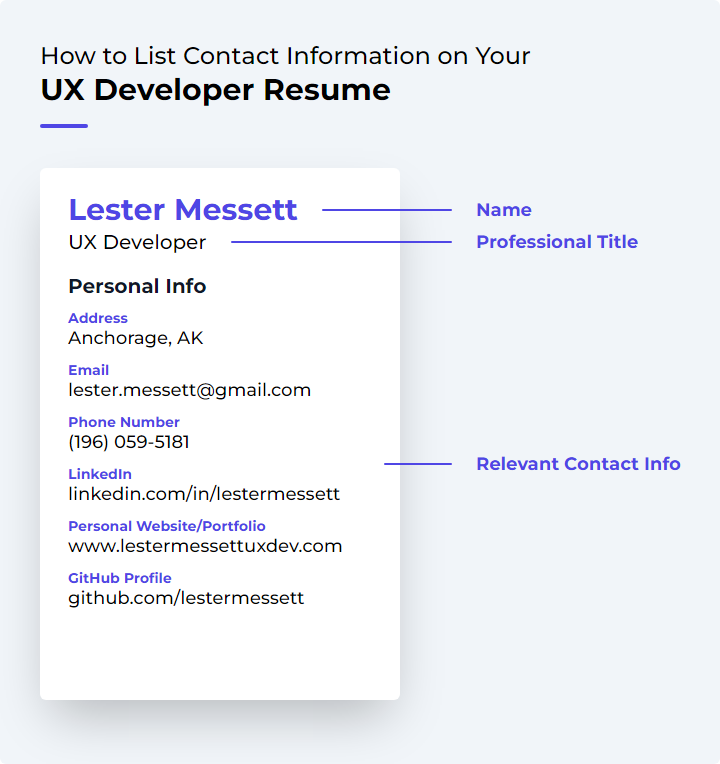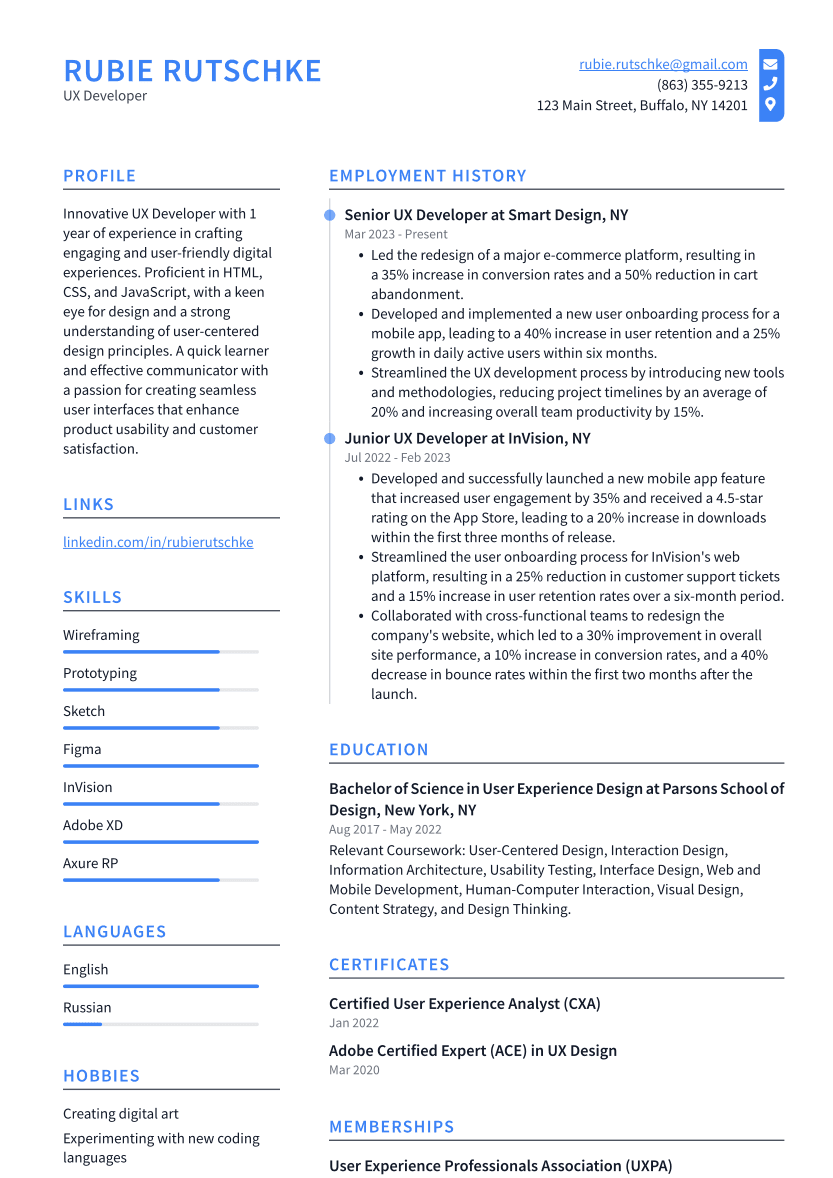UX Developer Resume Examples
Writing a great ux developer resume is important because it is one of the first things a potential employer will see when they are considering you for a position. It is your opportunity to make a good first impression and sell yourself as the best candidate for the job.
Create your resume
Select from 7 professional resume templates
If you're looking for inspiration when it comes to drafting your own ux developer resume, look no further than the samples below. These resumes will help you highlight your experience and qualifications in the most effective way possible, giving you the best chance of landing the ux developer job you're after.
Essential Components of a UX Developer's Resume
A UX Developer's resume is a critical tool that showcases your expertise, previous projects, and achievements in the realm of User Experience Development. It's a reflection of your professional journey and your proficiency in creating user-centric designs. Crafting each section with care is crucial to captivate potential employers and distinguish yourself from the competition.
In this guide, we'll dissect the key sections of a UX Developer's resume, discuss their significance, and provide insights on how to enhance their impact.
1. Contact Information
Ensure your resume begins with clear and accurate contact information. This should be readily visible for recruiters to contact you regarding job opportunities.

Include your full name, phone number, and a professional email address—preferably a combination of your first and last names. Also, consider adding your LinkedIn profile and personal website to provide further insight into your capabilities.
- For those seeking jobs in different locations, mention your city and state or country, but omit exact addresses for privacy.
Accuracy and currency in your contact details are imperative to avoid missed opportunities and demonstrate attention to detail.
2. Professional Summary or Objective
The Professional Summary or Objective section is a concise pitch that highlights your value proposition to potential employers.
A Professional Summary should encapsulate your core skills, experience, and notable accomplishments, tailored to the job you're applying for.
An Objective statement, while less common, can be effective for career changers or those targeting a specific UX role, focusing on your career goals and contributions to the company's success.
- Keep it succinct,
- Relevant,
- And engaging.
This section should encourage hiring managers to delve deeper into your resume.
Related: Top UX Developer Resume Objective Examples
3. Skills and Competencies
The Skills and Competencies section is a showcase of your technical and interpersonal abilities relevant to the UX Developer role.
- Technical Skills: Proficiency in design software (e.g., Sketch, Adobe XD, Figma, InVision), coding languages (HTML/CSS, JavaScript), and user-centered design principles are essential.
- Interpersonal Skills: Problem-solving, effective communication, and collaboration with teams are equally important.
- User Empathy: Understanding user needs is crucial for creating effective design solutions.
- Analytical Skills: Analyzing user feedback and behavior is key to enhancing the user experience.
- Project Management: Overseeing project timelines and coordinating with teams is a valuable skill.
- Business Acumen: Aligning design solutions with business objectives can set you apart.
Provide concrete examples of how you've applied these skills in practice. Highlighting additional relevant skills, such as accessibility standards or Agile/Scrum methodologies, can give you an edge.
Related: UX Developer Skills: Definition and Examples
4. Work Experience
The Work Experience section chronicles your professional journey, emphasizing your hands-on experience in UX design and development.
List your roles in reverse chronological order, detailing your responsibilities and achievements with quantifiable metrics where possible. Use action verbs to convey your contributions and tailor this section to align with the job description.
5. Education and Certifications
The Education and Certifications section provides insight into your formal education and ongoing professional development in UX.
List relevant degrees and certifications, including the institution and completion date. Ongoing courses, workshops, and seminars can also be included to demonstrate your commitment to continuous learning.
Related: UX Developer Certifications
6. Portfolio of UX Projects
A portfolio is a compelling addition to your resume, showcasing your direct experience and skill set through completed projects.
Include a variety of projects with descriptions, challenges faced, and solutions implemented. Visuals and links to live work can enhance this section, along with a clear explanation of your role in each project.
7. References or Testimonials
References or testimonials can bolster your credibility, offering insights into your collaborative nature and professional conduct.
Testimonials should highlight the quality of your work and skills, while references should be prepared to provide a positive account of your professional history. Always secure permission before listing someone as a reference.
While not always immediately requested, having references or testimonials ready demonstrates transparency and confidence in your professional contributions.
